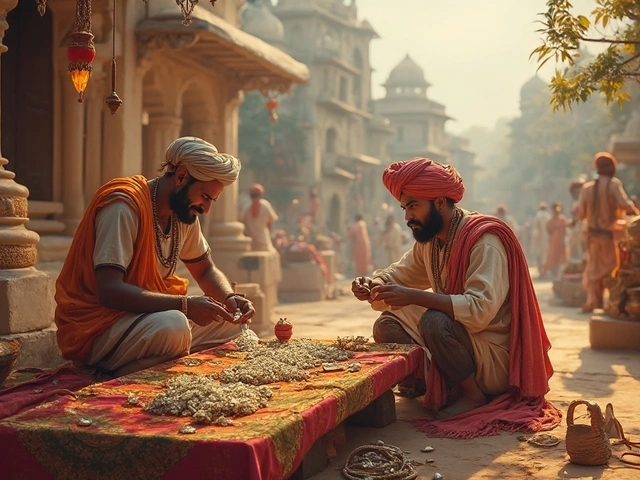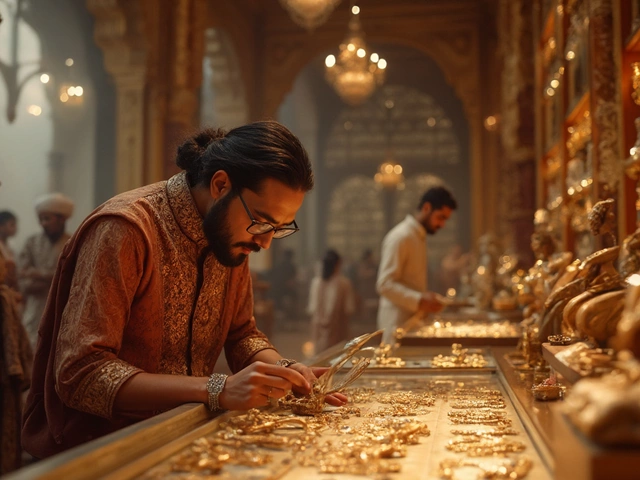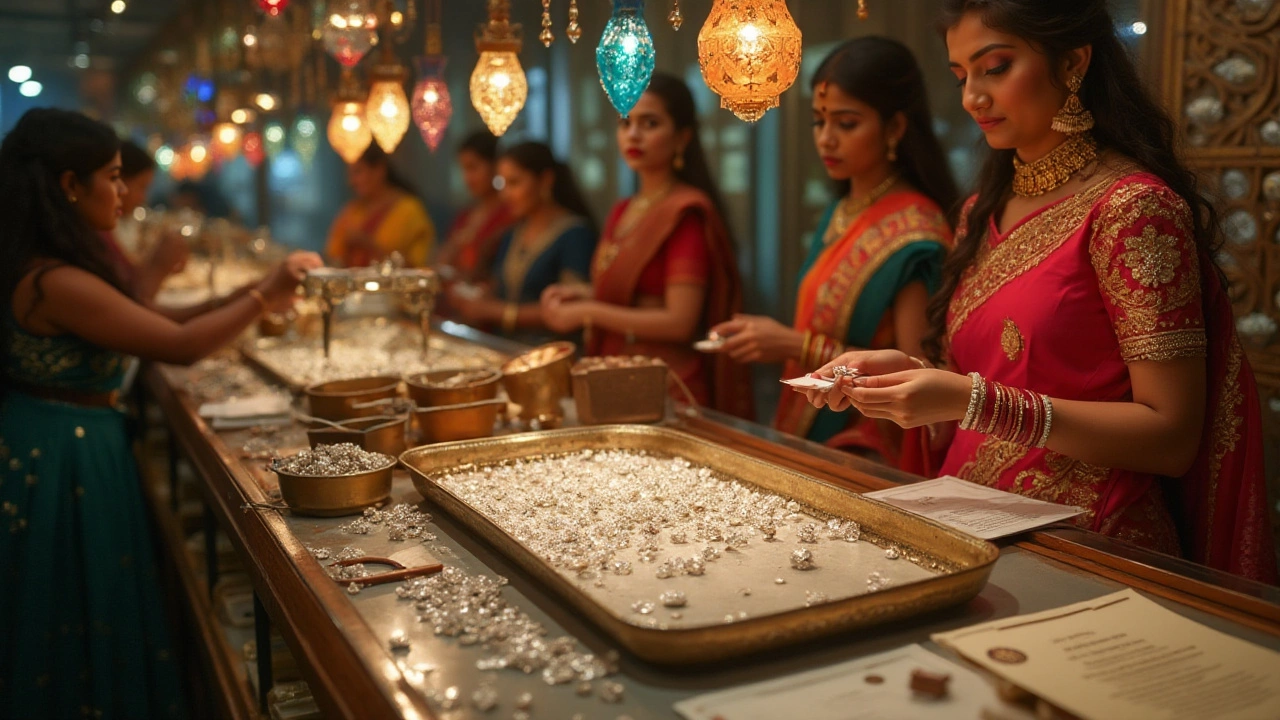
India, a land renowned for its vibrant culture and rich history, is also a significant player in the global diamond industry. With bustling markets and expert craftsmen, the country offers a variety of diamond jewelry, attracting buyers from all over the world. However, many potential buyers often have lingering questions about the authenticity of the diamonds sold.
This article aims to shed light on whether India truly offers real diamonds and how one can identify genuine pieces amidst the vast sea of options. We will explore India's storied past with diamonds and how it continues to influence modern trade. Additionally, we'll arm you with insights and tips to ensure that your sparkling purchases are as authentic as they are beautiful.
- The Legacy of Diamonds in India
- India's Role in the Global Diamond Market
- Identifying Genuine Diamonds
- Understanding Diamond Certifications
- Tips for Buying Real Diamonds in India
- Future of Diamond Trade in India
The Legacy of Diamonds in India
Long before diamonds adorned the crowns of royalty in Europe or became a symbol of everlasting love, their journey began in the rich alluvial plains of India. As early as the 4th century BC, India was the sole source of diamonds worldwide. These stones, prized for their beauty and mystery, were sifted from riverbeds in regions like Golconda, whose name has since become synonymous with legendary diamond mines. Centuries before other civilizations even knew of diamonds, the Indian subcontinent had already established trading routes that carried these glittering gems across Asia to the far reaches of Europe.
Diamonds held significant cultural and spiritual importance in ancient India. They adorned royal insignias and were thought to possess protective powers, acting as talismans against evils and diseases. The famed Koh-i-Noor, one of the largest recorded diamonds in history, has its roots in Indian soil, becoming a symbol of sovereignty and power through generations of rulers. It is fascinating how these pieces of carbon became so ingrained not only in India’s cultural fabric but also its economic structure. Acknowledging this, Jean Baptiste Tavernier, a noted 17th-century traveler and gem dealer, effused about India's wealth of exceptional stones in his journals.
By the Middle Ages, India had become a bustling hub for diamond trades, pivotal in defining early diamond markets and economy. This was not merely because of its rich deposits, but due to the expertise developed in diamond cutting and finishing, which were leaps ahead of the techniques practiced anywhere else globally. Here, artisans honed their skills for generations, passing down precision practices that enhanced the stone's natural splendor. As these gems traveled from local markets to global bidders, each carried with it a slice of Indian craftsmanship and tradition.
While diamonds are no longer mined in India, as original mines have long dwindled or exhausted, the legacy continues through the country's significant role in the cutting and polishing sector. An astonishing 90% of the world's diamonds pass through the adept hands of Indian artisans. This stewardship has only expanded India's influence in the global diamond industry, creating an economy of highly skilled labor that remains unmatched to this day. Dr. Harshad Bhai, a leading gemologist, once remarked, "India doesn’t just trade diamonds; it transforms them."
Looking at India’s role today, though mining might have found new homes in Africa and Russia, the knowledge and tradition of diamonds remain deeply embedded in the Indian ethos. The growth of cities like Surat as colossal centers for diamond processing solidifies India's stature in this sparkling trade. Thus, when you explore diamond rings in India, you're not just buying a stone; you're embracing a historic legacy forged over millennia.
India's Role in the Global Diamond Market
India has carved out a distinguished place in the global diamond market, showcasing an influence that extends far beyond its borders. The Indian diamond industry is not merely a part of international trade; it is a driving force that shapes market trends and consumer preferences. India's role in the diamond market is uniquely multifaceted – from mining and cutting to polishing and trading. The country houses some of the world's largest diamond retail centers, particularly in cities like Surat and Mumbai, where an impressive share of the world's diamonds are processed.
The history of India and diamonds dates back several centuries, with the country being the initial home to some of the first diamond mines known to humanity. Although India's old mines are now depleted, its legacy continues in its unparalleled craftsmanship and skilled labor. The modern diamond processing industry in India processes more than 90% of the world’s diamonds by number, employing millions and contributing significantly to the national economy. This dominance in processing is bolstered by advanced technologies and meticulous artistry, ensuring that each diamond shines with unparalleled brilliance.
India's diamond industry is robustly supported by a network of government policies and trade agreements that facilitate both export and import activities. As a member of the Kimberley Process, India plays a critical role in ensuring that diamonds are conflict-free, thus adding layers of trust for international buyers. India's prowess in the diamond sector has made it a preferred partner for countries seeking both raw diamonds and refined jewelry. The symbiotic relationship between India's diamond trade and its global counterparts ensures a seamless flow of diamonds from raw materials to finished products.
According to recent statistics, India's diamond exports reached over $15 billion, a testament to its critical place in economies worldwide. Not only do these numbers highlight India's quantitative contribution to the market, but they also reflect the sophisticated supply chain and operational excellence exhibited by Indian diamond manufacturers. To understand the significance of India's role in the diamond world, one need only look at the bustling trade fairs like the India International Jewellery Show, which attract glittering attention from investors and buyers globally.
"India's diamond sector combines traditional craft with technological innovation, consistently setting benchmarks in quality and efficiency," remarked a spokesperson from a leading diamond association.
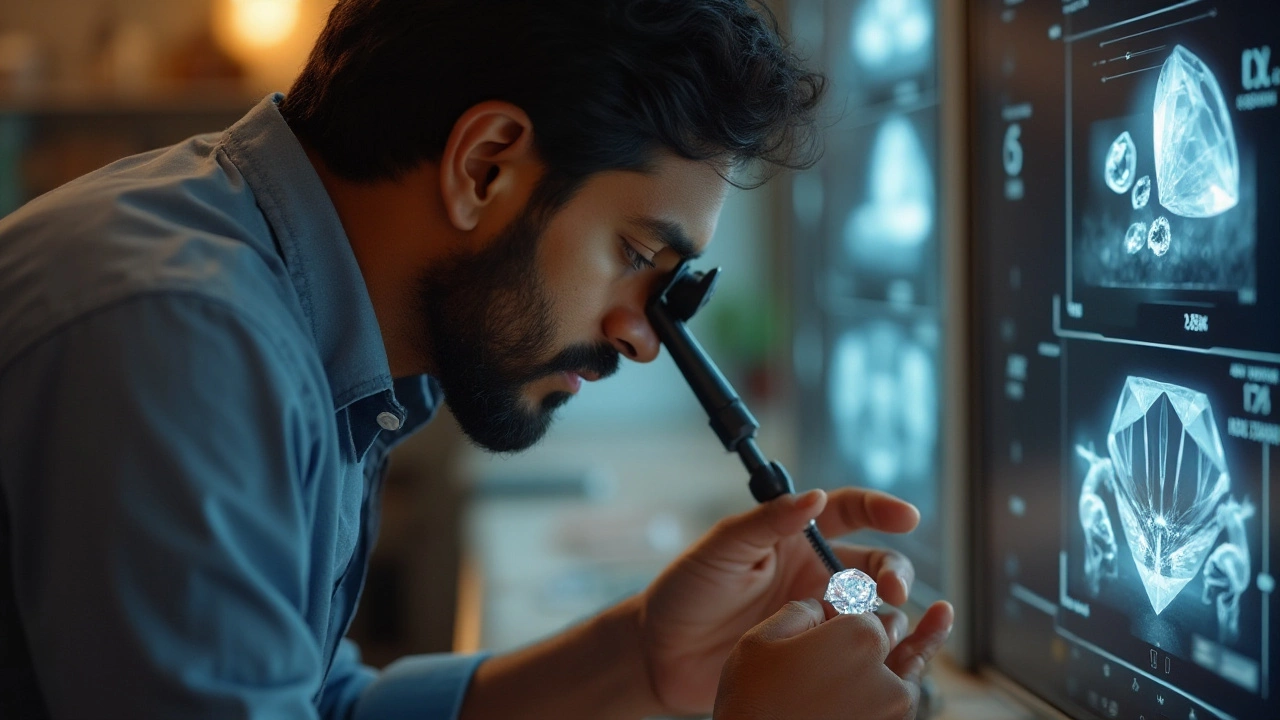
Identifying Genuine Diamonds
In the fascinating world of diamond rings in India, differentiating between real and faux gems is a skill both novice and seasoned buyers strive to perfect. The quest to identify genuine diamonds begins with an understanding of what makes these stones unique. Real diamonds boast certain characteristics that stand out, like exceptional hardness, distinctive ways they reflect light, and distinct inclusions that speak of their natural origin. Diamonds are among the hardest known substances, ranking 10 on the Mohs hardness scale. This attribute makes them resistant to scratches and other forms of wear, unlike softer imitation stones.
One effective method to verify the authenticity of a diamond is the 'Water Test.' This simple experiment involves dropping the stone in question into a glass of water. Due to their density, real diamonds will sink to the bottom, whereas many imitations will float or suspend mid-way. Additionally, checking how a diamond interacts with light can be telling. Authentic diamonds exhibit a brilliance and fire due to their unique crystalline structure. Under a loupe, the reflections in a real diamond are usually sharp and well-defined. However, human eyes alone might miss subtleties caught by a trained professional's equipment.
"A diamond's story stretches over a billion years, yet its journey to the surface is much shorter," says gemologist Ashok Bansal, highlighting the long path from formation to finger, emphasizing the worth borne in each natural imperfection.
Scientific advancements have birthed synthetic diamonds, creating additional challenges for identification. Lab-created diamonds share the same chemical properties as natural ones, blurring lines further. Yet, tools like spectroscopy and hi-tech imaging devices can detect certain fluorescence patterns that differentiating them from their natural counterparts. Engaging a reputable jeweler known for stringent quality checks and certifications helps in making sure the diamond you buy is genuinely sourced and legally traded.
Certifications from well-known gemological institutes, such as the Gemological Institute of America (GIA), are vital in ensuring you have a genuine product. These certificates provide a detailed analysis of the diamond's properties, helping buyers make informed decisions. Each certificate lists clarity, cut, carat weight, and color, which are crucial in determining diamond authenticity. You must walk away from a dealer who hesitates to show certifications. Armed with this insight, buyers can be more confident in their pursuit of an authentic diamond, making informed decisions while enjoying the sparkle that real diamonds bring to life.
Understanding Diamond Certifications
In the glittering world of India diamond rings, knowing what you're buying is crucial, and that's where diamond certifications come into play. These certifications act like a quality assurance stamp, offering buyers peace of mind while making such a significant purchase. But what exactly goes into a diamond certification, and why is it so important for verifying the authenticity of real diamonds? At the heart of this process are trusted gemological laboratories, each boasting their own diamond grading systems.
Prominent among these laboratories is the Gemological Institute of America (GIA), which has set the standard for jewelry professionals everywhere. Known for their rigorous grading systems, the GIA evaluates diamonds based on the famous 4Cs: Cut, Color, Clarity, and Carat Weight. A GIA certification means that a diamond has been meticulously examined under strict standards, ensuring every aspect is accurate. Another widely respected certifying body is the International Gemological Institute (IGI), particularly popular across India. The IGI strives for transparency and consistency, making its certificates quite esteemed within the Indian market.
Although certifications can't tell you everything about a diamond's beauty or allure, they serve as invaluable tools for assessing value and authenticity. Buyers should always seek to understand what each part of a certification means. For example, a diamond rated with a 'D' in color on GIA's scale is entirely colorless, making it exceedingly rare. Meanwhile, clarity ratings highlight the tiny imperfections within a stone, which may not be visible to the naked eye but significantly impact value. According to a statement by the GIA, "A certification provides the confidence to buy with knowledge."
"It is not the price of a diamond that determines its worth, but the certification that supports its story," remarked Rajiv Matapurkar, a gemology expert.
In India, awareness about the significance of certifications is growing, but it still requires diligence on the buyer's part. Checking certifications is more than just a formality—it's a necessity. Fake certificates are not unheard of, so familiarity with genuine certification features can protect you from unscrupulous dealings. When considering a purchase, whether from a well-known jeweler or a local artisan, always ask to view the certification and take time to understand its authenticity.
To make navigating this certification landscape easier, here are a few tips:
- Always research the certifying laboratory's reputation.
- Verify serial numbers on certificates through the laboratory's official website.
- Compare characteristics listed on the certificate with what you see in the diamond.
- Beware of certificates from unknown or non-trusted sources.
With these practices, ensuring that the diamond you prize is as genuine as its dazzling sparkle. As the demand for diamond jewelry grows, especially in diverse markets like India, understanding and valuing these certificates becomes ever more vital. With knowledge as your ally, the glint of real diamonds bought in India can continue to outshine doubts, adding sparkle and authenticity to your cherished collection.
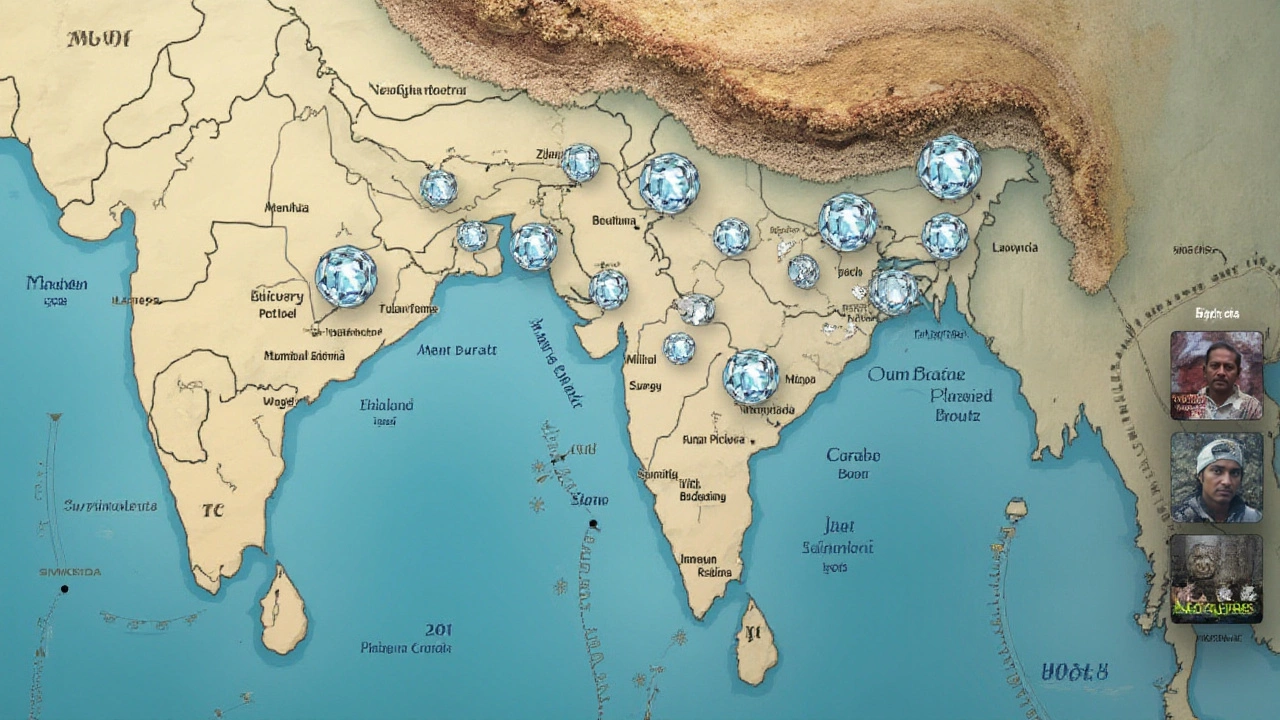
Tips for Buying Real Diamonds in India
Embarking on the journey to purchase diamond rings in India can be both an exhilarating and daunting endeavor. The country is brimming with dazzling options, each piece reflecting a story of craftsmanship and tradition. However, ensuring what you buy is genuine requires a keen eye and informed decision-making. First, it's crucial to understand the importance of certification. If you want to ascertain the authenticity of the diamond, insist on a certificate from a reputed gemological laboratory such as the Gemological Institute of America (GIA) or the International Gemological Institute (IGI). These certifications offer a detailed analysis of the diamond's grade, assuring you of its quality and authenticity.
Another essential aspect of buying real diamonds is educating yourself about the 4Cs – carat, cut, color, and clarity. Each of these factors plays a significant role in determining the value of your diamond. For instance, while a diamond’s carat measures its size, the cut affects its brilliance and visual appeal. A diamond’s color is graded on a D-Z scale, with the most colorless diamonds graded as D. Understanding these aspects helps you appreciate what you're investing in, turning the purchase into a more informed choice.
When shopping in India, never underestimate the power of a second opinion. Reputable jewelers often offer you the option to double-check a stone with an independent gemologist or jeweler. This extra step can provide peace of mind. Additionally, be wary of deals that seem too good to be true. Exorbitantly discounted prices might indicate synthetic or low-quality diamonds being passed off as genuine. Remember, authenticity and transparency should always precede the allure of a bargain.
"India’s diamond industry is a remarkable confluence of tradition and advanced technology," as noted by renowned jeweler Leela Mehta. "The key to making wise purchases is to respect both the artisan's craft and scientific verification."
It might also be helpful to understand the significance of diamond trading hubs within the country. Cities like Surat and Mumbai are renowned for their cutting and polishing expertise. Visiting these hubs provides not only a wider variety of options but also the opportunity to interact with skilled artisans and traders who can offer insights into the diamond's journey from raw stone to radiant jewel.
Lastly, always get a clear sense of the return or upgrade policy offered by the retailer. A reliable jeweler would provide a fair policy, ensuring that you can return or exchange the diamond if it doesn’t meet your expectations after purchase. This kind of guarantee builds trust and tends to indicate a business's confidence in its merchandise's authenticity. Taking these steps makes buying diamond rings in India a memorable and secure experience, anchored in knowledge and trust.
Future of Diamond Trade in India
The future of diamond trade in India gleams with promise and unfolds a vast spectrum of opportunities and challenges awaiting the industry. As a nation with profound historical and cultural ties to precious stones, India stands at a pivotal moment in the global diamond market. Presently, India processes almost 90% of the world's rough diamonds, underscoring its pivotal position in the industry. However, the future beckons with transformation as digital technologies, consumer preferences, and sustainable practices start to reshape how the industry operates.
One of the significant shifts anticipated in India's diamond trade is an increasing embrace of digitalization. As technology infiltrates every sector, even the traditional diamond industry is not left untouched. E-commerce platforms are burgeoning, making it easier for consumers across the world to purchase authentic diamonds from India without setting foot in the country. This digital realm offers transparency with virtual certificates of authenticity and detailed information about each piece, which augurs well for ensuring buyers receive real diamonds. Automation and cutting-edge machinery are refining processing techniques, ensuring precision and minimizing waste, while also posing unique challenges for labor-intensive sectors accustomed to traditional craftsmanship.
The demand for sustainable and ethically sourced diamonds is increasing, affecting India's policies and practices. Consumers today are more conscientious and desire transparency about the origin of their diamonds. This change pressure India to demonstrate accountability in its mining and trading practices, aligning with international standards to maintain its competitive edge. The Government of India, recognizing the need for reform, has initiated programs to support small retailers and craftsmen while ensuring that the diamond trade remains ethical and environmentally friendly.
"India will continue to dominate the diamond market, but it needs to adapt quickly to changing global norms and consumer behavior," says Rutvik Patel, director of a leading Indian diamond trading company.
In addressing these demands, India can leverage its expertise and reputation but must strategically pivot to uphold these practices. Educational initiatives are being launched to train the next generation of jewelers and traders, equipping them with knowledge about modern techniques and sustainable strategies. Events like 'The India International Jewellery Show' have become pivotal in bridging India to global markets, showcasing innovations and gaining insights into international trends.
Finally, the influence of synthetic diamonds cannot be overlooked. As technology advances, synthetic diamonds come closer to matching the characteristics of natural ones. India faces the opportunity to diversify its offerings by expanding into the synthetic diamond market, which is witnessing a surge due to its affordability and ethical benefits. As India navigates these dynamic landscapes, balancing tradition with innovation will be key. It must continue to reform and embrace new trends, ensuring robust growth in its diamond industry while preserving its glorious legacy. This strategic foresight positions India not only as a significant diamond trade hub but as a leader shaping the future trajectory of diamonds globally.
